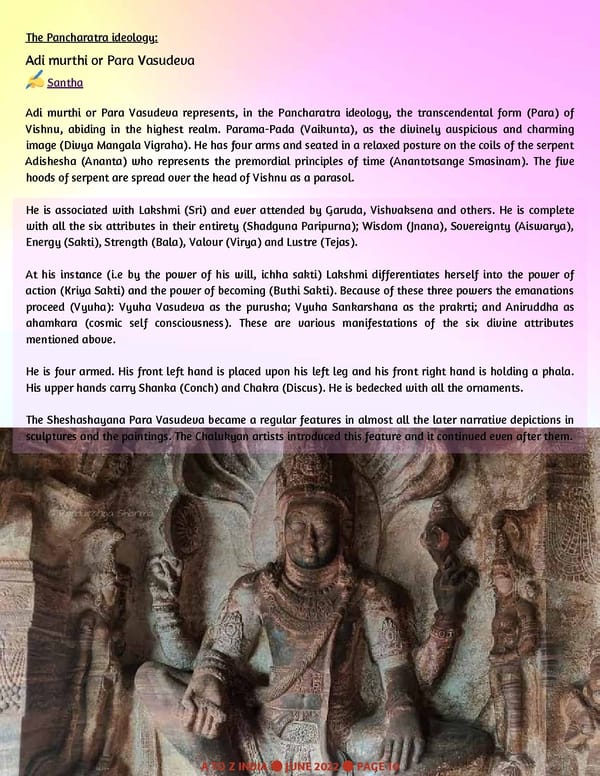Adi murthi or Para Vasudeva represents, in the Pancharatra ideology, the transcendental form (Para) of Vishnu, abiding in the highest realm. Parama-Pada (Vaikunta), as the divinely auspicious and charming image (Divya Mangala Vigraha). He has four arms and seated in a relaxed posture on the coils of the serpent Adishesha (Ananta) who represents the premordial principles of time (Anantotsange Smasinam ). The five hoods of serpent are spread over the head of Vishnu as a parasol. He is associated with Lakshmi (Sri) and ever attended by Garuda, Vishvaksena and others. He is complete with all the six attributes in their entirety (Shadguna Paripurna); Wisdom (Jnana), Sovereignty (Aiswarya), Energy (Sakti), Strength (Bala), Valour (Virya) and Lustre (Tejas). At his instance (i.e by the power of his will, ic hha sakti) Lakshmi differentiates herself into the power of action (Kriya Sakti) and the power of becoming (Buthi Sakti). Because of these three powers the emanations proceed (Vyuha): Vyuha Vasudeva as the purusha; Vyuha Sankarshana as the prakrti; and Aniruddha as ahamkara (cosmic self consciousness). These are various manifestations of the six divine attributes mentioned above. He is four armed. His f ront left hand is placed upon his left leg and his front right hand is holding a phala. His upper hands carry Shanka (Conch) and Chakra (Discus). He is bedecked with all the ornaments. The Sheshashayana Para Vasudeva became a regular features in almost all the later narrative depictions in sculptures and the paintings. The Chalukyan artists introduced this feature and it continued even after them. Santha Adi murthi or Para Vasudeva The Pancharatra ideology: A TO Z INDIA JUNE 2022 PAGE 10
 A TO Z INDIA - JUNE 2022 Page 9 Page 11
A TO Z INDIA - JUNE 2022 Page 9 Page 11